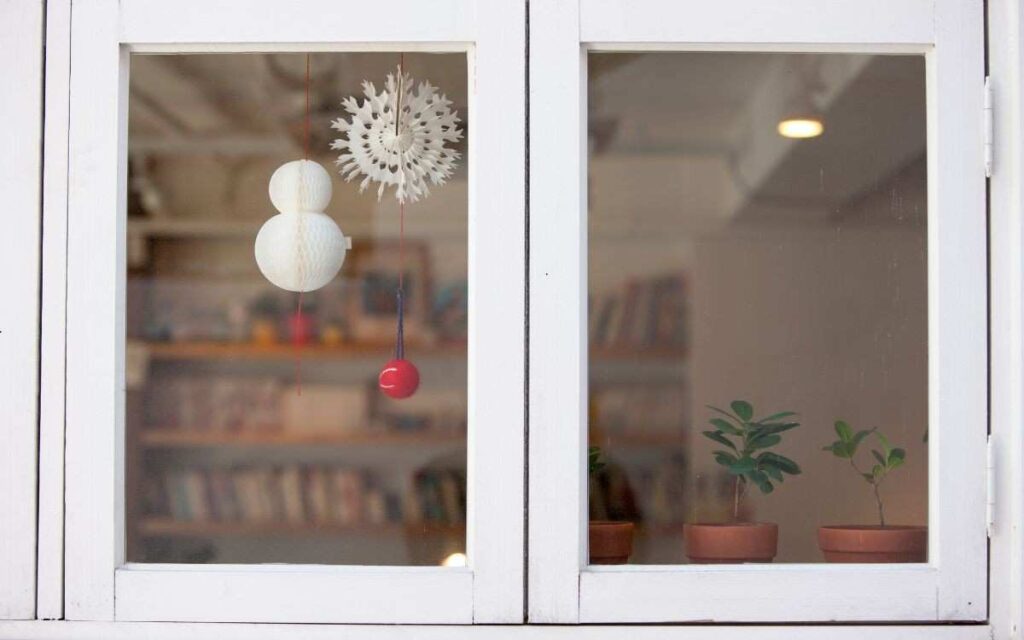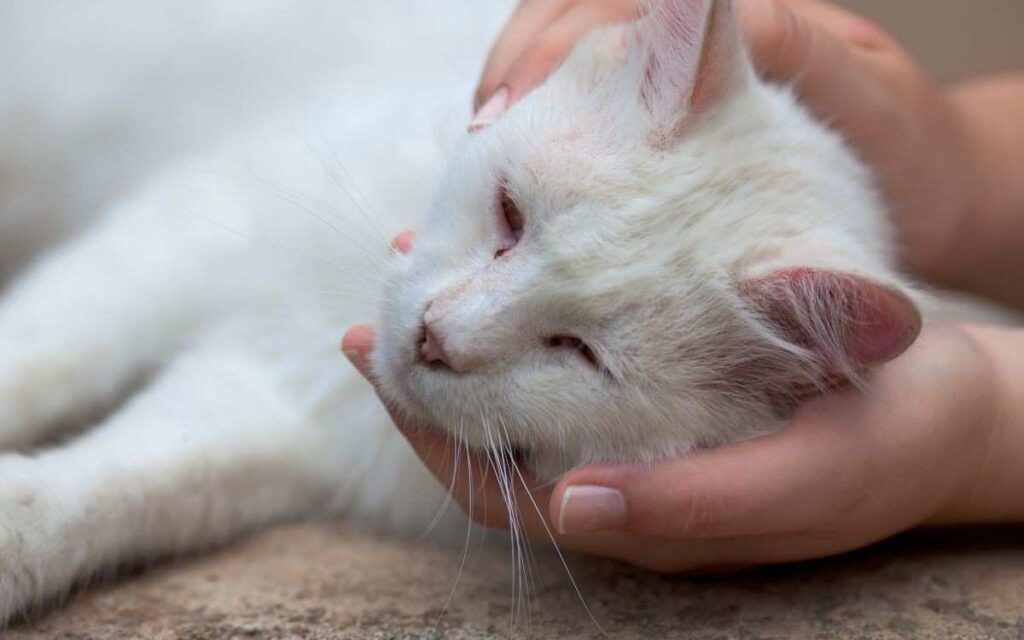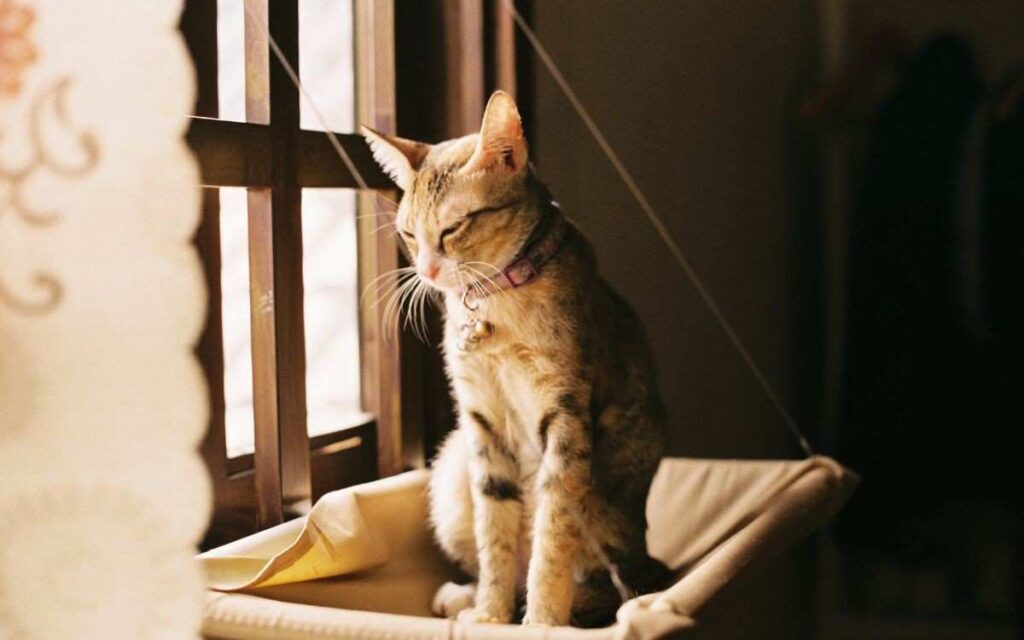We frequently use a variety of decorations in an effort to make our houses feel festive and welcoming. Gel window clings are one such product that has increased in popularity in recent years. During holidays and other special events, these bright and whimsical decorations are frequently utilized to give our windows a charming touch.
But as responsible pet owners, we must think about the security of our cats. This article looks into whether window clings made of gel are poisonous to cats and offers tips on how to decorate our houses while still keeping our pets safe.
What Are Gel Window Cling?
Usually comprised of a soft, gel-like material, these decorations stick to glass surfaces without the need for adhesives. They are a flexible option for seasonal and holiday decorations because they are available in a variety of forms, sizes, and styles.
Examining its content is essential to determine if cats can ingest them. Water, polymer binders, plasticizers, and coloring compounds make up the majority of the ingredients in gel window clings. Although these substances are typically regarded as harmless for humans.

Are Gel Window Clings Toxic To Cats?
These are not toxic to cats in general. The manufacturers of the clings make them pet-friendly. However, some gel clings contain toxic chemicals such as phthalates, in small amounts. These types of clings should be kept away from the cats.
These window clings are not poisonous for the cat, but they can impose some other types of problems on the cat, which are described below
Potential Hazards Of Gel Window Clings To Cats
When you have inquisitive feline companions, gel window clings can be a source of both happiness and concern. It’s important to be aware of any risks that these decorations could present to our beloved pets.
So let’s explore the particular dangers that clings pose to our feline pals.
1. Ingestion Risk:
Cats are inherently curious animals, and they frequently use their jaws to examine their surroundings. Cats may find gel window clings appealing due to their texture and hues. There is a chance that a cat will eat small bits if it chooses to chew or play with these decorations. Ingestion of this substance may cause digestive problems, including vomiting and diarrhea.
2. Obstruction Danger:
In some situations, if a cat is able to swallow a significant proportion of a gel window cling, it could possibly result in an obstruction of the intestines. This is a serious condition that has to be treated by a veterinarian right away. It is essential to make sure cats cannot access or ingest these decorations in order to reduce this risk.
3. Allergic Reactions:
Although it’s uncommon, some cats could be allergic or sensitive to the components used in gel window clings. Individuals who are allergic to these decorations may experience skin or mouth responses as a result of contact.
How To Keep Your Cat Safe From Gel Window Clings?
Here are some practical steps to keep your feline friend safe while still enjoying the decorative appeal of gel window clings:

1. Supervision:
Keeping a close eye on them is the simplest and most reliable technique to guarantee your cat’s security close to it. Cats are inherently inquisitive, and they might inspect these vibrant decorations as a result of their playful nature. Redirect your cat’s interest to a cat-safe toy or activity if you see them become interested in the clings.
2. Secure Placement:
Gel window clings should be placed high up on windows, out of your cat’s reach. Cats are adept climbers, so place the decorations far from where they could jump. This lessens your cat’s desire to paw at or otherwise engage with the clings.
3. Cat-Friendly Alternatives:
Instead of gel window clings, think about utilizing cat-friendly window decorations. Cat-specific window decals or stickers can give your windows a festive look without any risks. These decals frequently have bird or fish themes that won’t hurt your cat but will keep it entertained.

4. Regular Inspection:
Check the condition of your window clings on a regular basis. Your cat may be able to pull them off the window if they are worn down or become loose over time. To avoid accidents, replace any clings that are fading or damaged right away.
5. Distract and Engage:
Keep your cat mentally and physically engaged with interactive toys and play sessions. A well-exercised and mentally stimulated cat is less likely to be fixated on exploring decorations. Providing a variety of toys and activities can help redirect their curiosity away from the window clings.
6. Training and Positive Reinforcement:
Consider training your cat using positive reinforcement techniques. Reward your cat when they exhibit desired behaviors, such as ignoring the gel window clings. Over time, they may learn to avoid these decorations voluntarily.
7. Consult a Veterinarian:
If you have specific concerns about your cat’s behavior around gel window clings or if they have a history of ingesting foreign objects, consult with your veterinarian. They can offer guidance and recommendations tailored to your cat’s unique needs.
What To Do If Your Cat Ingest Gel Window Clings?
Discovering that your cat has ingested gel window clings can be a cause for concern. While these decorations are not inherently toxic, there are potential risks associated with ingestion.
Here’s a step-by-step guide on what to do if you your cat has ingested gel window clings:
1. Assess the Situation:
Try to gather as much information as possible. Determine the quantity of gel window clings your cat may have ingested and whether they are exhibiting any unusual behavior or discomfort.
2. Contact Your Veterinarian:
It’s crucial to reach out to your veterinarian or an emergency pet clinic immediately. Share all relevant information, including the type of decoration ingested, the estimated quantity, and your cat’s current condition. Follow their guidance closely.
3. Do Not Induce Vomiting:
Unlike some toxic substances, it’s generally not advisable to try and induce vomiting in cats after ingesting gel window clings. This could lead to additional complications.
4. Follow Veterinary Advice:
Your veterinarian will provide instructions based on your cat’s specific situation. They may recommend bringing your cat in for a thorough examination or advise you on steps to monitor their condition at home.
5. Provide Supportive Care:
Depending on your veterinarian’s advice, you may need to provide supportive care at home. This could include monitoring your cat’s behavior, ensuring they have access to fresh water, and keeping them calm and comfortable.
Conclusion
In conclusion, gel window clings are not inherently toxic to cats. However, they can pose certain risks, particularly if ingested or played with. Even while the answer may seem simple at first, extra research makes it harder to decide.
Some claim that the toxicity is slight and that it would take a significant amount of gel to harm cats. Others claim that indigestion of the gel clings can cause potential harm and one should be cautious about them. Beside your worry about gel window clings, you must also be cautious about are dragonflies poisonous to cats? Insects called dragonflies are fascinating creatures that live all over the planet.
FAQs
1. Can gel window clings cause long-term harm to my cat?
If consumed in small amounts, gel window clings are unlikely to have negative long-term effects. It’s important to keep your cat from nibbling on them, though.
2. What should I do if my cat ingests a gel window cling?
If your cat consumes a gel window cling, keep an eye on their behavior. As soon as you notice any indications of distress or discomfort in them, call your veterinarian.
3. Are there gel window clings specifically designed for pet owners?
Yes, some producers use non-toxic components to create pet-friendly gel window clings. If you have cats or other pets at home, think about utilizing these.
4. Can gel window clings be harmful to other pets, like dogs?
When using gel window clings, it’s still important to keep an eye on all pets to avoid any potential problems, even though cats are more likely to play with and eat little objects.
5. Are there alternative cat-safe decorations for windows?
When using gel window clings, it’s still important to keep an eye on all pets to avoid any potential problems, even though cats are more likely to play with and eat little objects.





